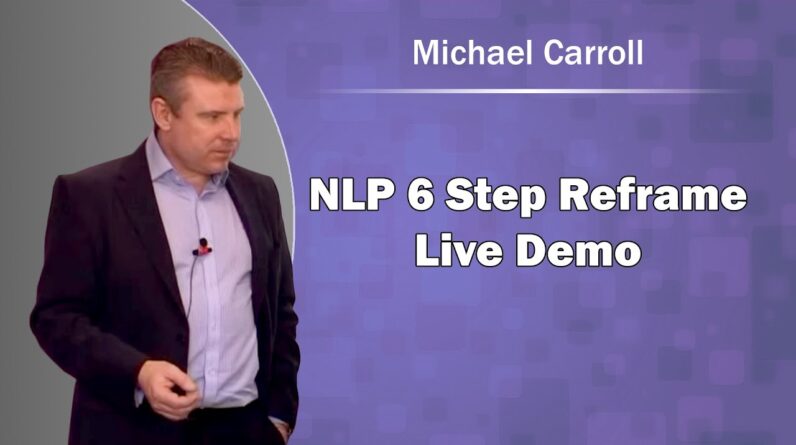
Did you know that 90% of purchasing decisions are influenced by emotions? In the world of marketing, understanding consumer psychology is paramount to creating successful brand communication strategies.
Enter Neuro-Linguistic Programming (NLP), a powerful tool that can greatly enhance your marketing efforts. By leveraging NLP techniques, you can tap into the subconscious mind of your audience, establish an emotional connection, and drive persuasive messaging that resonates.
Key Takeaways:
- Consumer psychology plays a crucial role in persuasive marketing.
- NLP techniques can be used to craft impactful and emotionally resonant brand messages.
- Visual imagery and storytelling are powerful tools in creating compelling narratives.
- Subliminal messaging through NLP can subtly influence consumer behavior.
- Incorporating NLP into marketing strategies can lead to increased brand loyalty and engagement.
Understanding the Psychology of Persuasion in Marketing
Consumer psychology holds immense significance in the realm of persuasive marketing. By decoding the inner workings of the consumer mind and gaining insights into the principles of persuasion, marketers can effectively craft brand messages that resonate with their target audience.
Persuasion, at its core, is about understanding what influences consumer behavior and leveraging that knowledge to create impactful marketing strategies. It involves appealing to emotions, desires, and needs to prompt consumers to take action. By understanding the psychological factors that drive decision-making, marketers can create brand messaging that speaks directly to consumers’ desires and motivations.
One key aspect of consumer psychology in marketing is the ability to create a strong emotional connection with the audience. Emotions play a fundamental role in decision-making, and by incorporating emotional appeals into brand messages, marketers can create a lasting impact.
“Emotion creates engagement, and engagement builds relationships.”
Understanding the psychology of persuasion enables marketers to tap into consumers’ emotions and create a sense of connection and trust. It allows brands to communicate their value proposition effectively and differentiate themselves from competitors. By understanding the triggers that influence purchasing decisions, marketers can optimize their brand messaging and drive engagement.
In addition to emotions, another important aspect of consumer psychology relates to the power of storytelling in brand messaging. Humans are naturally drawn to stories, and they have the power to captivate and engage. By incorporating storytelling techniques into marketing campaigns, marketers can create narratives that resonate with their target audience and elicit desired responses.
Harnessing consumer psychology and understanding the principles of persuasion empowers marketers to craft brand messaging that speaks directly to their target audience. By creating compelling messages that tap into emotions, incorporate storytelling, and align with consumers’ values and desires, marketers can influence behavior and drive successful marketing campaigns.
Throughout this article, we will explore various facets of consumer psychology and bring to light how understanding the psychology of persuasion can pave the way for effective marketing strategies.
Incorporating NLP Techniques in Brand Messaging
NLP techniques offer an array of powerful tools that can significantly enhance the impact of brand messaging. By incorporating these techniques, marketers can create impactful and emotionally resonant brand messages that establish a strong connection with their target audience.
Anchoring Emotions for Lasting Impressions
One effective NLP technique in brand messaging is anchoring emotions. By associating positive emotions with your brand, you can create lasting impressions in the minds of consumers. Emotions play a critical role in decision-making, and when aligned with your brand, they can form a strong emotional connection with your audience.
Anchoring emotions involves strategically linking sensory cues, such as visuals, sounds, or even specific words, to positive emotions experienced by your audience. By consistently using these cues in your brand messaging, you can evoke those positive emotions and strengthen the emotional bond between your brand and your consumers.
Mirroring and Matching for Connection
Another powerful NLP technique for brand messaging is mirroring and matching. This technique involves aligning your language, tone, and even body language with that of your target audience. By mirroring their communication style, you create a sense of familiarity and connection, making your brand more relatable and accessible to your audience.
Mirroring and matching can be applied to various aspects of your brand messaging, including written content, audiovisual material, and even in-person interactions. By adopting a communication style that resonates with your audience, you can establish a deeper connection and increase the impact of your messaging.
Effective brand messaging goes beyond words alone; it taps into the emotions and psyche of your audience. By incorporating NLP techniques like anchoring emotions and mirroring and matching, you can create brand messages that speak directly to the hearts and minds of your consumers.
Creating Impactful and Emotionally Resonant Brand Messages
When incorporating NLP techniques in brand messaging, it’s essential to craft messages that are impactful and emotionally resonant. By understanding the wants, needs, and aspirations of your target audience, you can tailor your messaging to address their specific pain points and desires.
Focus on using language and imagery that evoke emotions and create a sense of connection. Storytelling is a particularly effective technique for this purpose, as it allows you to weave narratives that engage and captivate your audience, leaving a lasting impression of your brand in their minds.
Remember, the goal is to create brand messages that not only inform but also inspire and persuade. By leveraging NLP techniques, you can craft impactful messaging that establishes an emotional connection and compels your audience to take action.
- Use descriptive and evocative language
- Appeal to your audience’s aspirations and desires
- Tell stories that resonate with their experiences
- Create a sense of urgency or exclusivity
Incorporating these elements into your brand messaging will help you create memorable and emotionally resonant messages that leave a lasting impact on your audience.
Crafting Compelling Narratives with Visual Imagery and Storytelling
Visual imagery and storytelling are powerful tools in marketing. By incorporating NLP techniques, you can create compelling narratives that resonate with your audience. Image-driven storytelling allows you to paint vivid pictures with words, capturing attention and enhancing brand recall. Harnessing the power of visual imagery in your brand narratives creates a lasting impression that connects emotionally with your audience.
With NLP techniques, you have the ability to craft narratives that evoke emotions and create a memorable brand story. By understanding your audience’s psychology, you can tap into their desires, aspirations, and fears, creating stories that truly resonate. Engaging storytelling builds a strong bond between your brand and consumers, fostering brand loyalty and establishing a deeper connection.
“Storytelling is the most powerful way to put ideas into the world today.” – Robert McKee
NLP techniques provide you with the framework to deliver stories that captivate your audience. By aligning language, tone, and imagery, you can create a cohesive narrative that leaves a lasting impact. With the combination of visual imagery and storytelling, your brand message becomes ingrained in the minds of consumers, creating a powerful and memorable brand experience.
Harnessing the Subconscious Influence of NLP in Marketing
Neuro-Linguistic Programming (NLP) techniques have the power to tap into the subconscious mind of consumers, allowing marketers to make a lasting impact through subliminal messaging. By strategically incorporating embedded commands and pattern interruption, marketers can subtly influence consumer actions and capture their attention.
Embedded commands are subtle directives embedded within marketing messages. By strategically using language patterns and emphasizing specific words or phrases, marketers can subconsciously steer consumers towards desired actions. These embedded commands bypass conscious resistance and directly influence the subconscious mind, resulting in increased persuasion and response rates.
Furthermore, pattern interruption is a powerful NLP technique that disrupts the usual flow of thought, capturing the audience’s attention and allowing marketers to deliver their messages with maximum impact. By utilizing unexpected or unusual elements in marketing materials, such as visuals that stand out or unique storytelling techniques, marketers can interrupt habitual thought patterns and create a moment of receptiveness where consumers are more open to receiving brand messages.
Subliminal messaging, when applied effectively, can act as a silent influencer, planting ideas and desires in the subconscious mind without conscious awareness. By utilizing NLP techniques, marketers can leverage the power of subliminal messaging to subtly encourage desired behaviors, preferences, and associations with their brand.
Benefits of Harnessing Subliminal Influence in Marketing:
- Increased brand recognition and recall
- Enhanced persuasion and conversion rates
- Development of strong emotional connections with consumers
- Subtle guidance and influence over consumer decision-making
- Improved brand loyalty and customer engagement
By intelligently employing NLP techniques to harness the subconscious influence in marketing, brands can create persuasive messaging that resonates deeply with their target audience. In doing so, marketers can achieve their marketing objectives by capturing attention, influencing behaviors, and building long-lasting brand relationships.
Next, we will explore the power of crafting compelling narratives with visual imagery and storytelling, and how NLP techniques can be seamlessly integrated to create engaging brand narratives that leave a lasting impression.

Conclusion
In conclusion, incorporating Neuro-Linguistic Programming (NLP) techniques into your marketing strategies can be a game-changer. By understanding consumer psychology, leveraging NLP techniques, and crafting impactful brand messages, you can establish a strong emotional connection with your audience and drive successful brand communication.
NLP provides a powerful set of tools and techniques that can greatly enhance your persuasive marketing strategies. By anchoring positive emotions to your brand, mirroring and matching language and tone, and creating compelling brand narratives with visual imagery and storytelling, you can captivate your audience and leave a lasting impression.
When you harness the subconscious influence of NLP through subliminal messaging and embedded commands, you can subtly guide consumer actions and capture their attention. This can lead to increased brand loyalty, improved consumer engagement, and ultimately, impactful results.
With the power of NLP, you can take your brand communication to new heights. So, don’t miss out on the opportunity to leverage NLP in your marketing. Start implementing these persuasive marketing strategies, and witness the transformative impact they can have on your brand.






